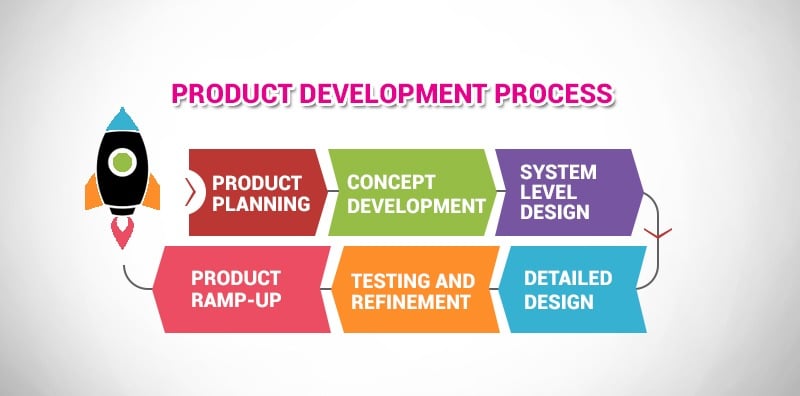Building a GREAT Product Concept
We’re now standing at a juncture where we know that a product is ‘People Desirable’ (learn more about it Here) and its need is REAL. So, we are NOW ready to embark on the product creation process.
But prior to that, it’s important to translate the customer need into a MISSION statement for your product, which should include the aspects mentioned below that can become a part of your product strategy and have a role to play in the product design.
- Product Description
- Value Proposition (Benefits)
- Key Business Goals
- Primary Market
- Secondary Market
- Stakeholders
Once this mission statement is defined, it’s important to define the customer needs in a little more detail. Let’s have a look at how we can define the Primary, Secondary & Latent Needs of a product by taking the example of a shopping cart used in the super-markets.
- Primary needs – “It should be strong and can carry heavy weight. It needs to be movable and on wheels.”
- Secondary needs – “It should be light and easy to handle; it should look sleek and neat.”
- Latent (hidden) needs – “It should be child safe, can protect fragile items & if it can track items in the cart, then there will be nothing like it!”
So now, let’s see how to enter the ‘CREATE’ phase of the product where we explore the solutions, implement these solutions and refine them further.
In Design Thinking, we split this entire process into 3 different phases:
- EXPLORE – In this stage, you go out to conduct extensive field research – see similar products and study the market and its offerings.
- CREATE – Where you develop the concept, design and prototype the product concept through Brainstorming; followed by down selection and an Integrated design process.
- IMPLEMENT – Build the Product Concepts, iterate and refine the same using Concept Testing
The typical Product Development Process looks like below
Let’s now go a little deeper into the concept development process. Here, we translate the customer needs into specific measurable targets that can be called the target specifications of the product. We can, then generate a product concept through brainstorming, ideation and innovation. And this is the right time to go wild with ideas and bring everything on table. From here, through a structured process of down-selection, we can select the desired product concepts for implementation. We’ve now got to validate the selected concept to ensure it meets customer needs so we can have a winning solution. And finally, before it goes into implementation we do some downstream development planning to set the final specifications and come up with the Development Plan.
Throughout the above process, we need to continuously keep 3 aspects in mind:
- Economic impact of the design
- Benchmarking the competitive products
- Building and testing the prototypes
Product Concept Development is an iterative process, the more you delve into it at the beginning, the greater are the chances of creating a successful product and reducing the rework towards the implementation phase. As they say, “To have a great idea…have a lot of them”, the more ideas you bring to the table, the greater are the chances of designing a great product!
The next in this series, we’ll delve deeper into the implementation aspects right from the product concept!
Stay tuned!














